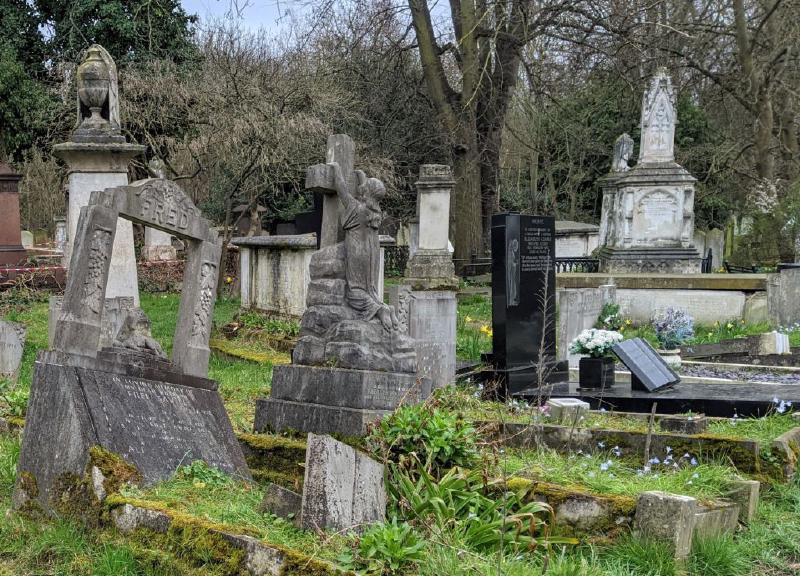Interview with Dimuthu about the education programme at the Soanes Centre in Tower Hamlets Cemetery park. Dim walks us through a few of the sessions he runs, including sessions on soil formation and rocks which take advantage of one of the special features of the cemetery park, the historical grave stones. He also talks a bit about navigating the topics of death and decay which inevitably come up teaching in such a unique setting.
This interview was recorded on location with a door open for ventilation, and fortunately/unfortunately includes a lot of background noise. (Bonus points of each bird species you can identify in the background?)
Sessions
Rocks and minerals
- Match rock samples with words describing uses
- Test the samples for hardness, porousness, reactivity to acid
- Based on the properties of the rocks students think about how they’d fare against weathering
- Venture out into the cemetery and look at different grave markers of the same age and compare the condition they’re in now
- Similar format could be followed at other historical sites which might have buildings or monuments made from different types of rock
Soils
- Address inevitable questions about the graves and what happened to the bodies of the people buried on the site
- Living things decompose and become part of the surrounding soil
- Fallen leaves provide a nice example of the process of decomposition
- Look a soil and leaflitter invertebrates and discuss how they feed on plant and animal matter, breaking it down
Microfossils
- Processing a sample of clay takes time but allows students to experience real palaeontology
- Big payoff once the processed sample goes under the microscope
- Similar activity can be done using other samples
- Beach sand : shells, bone fragments, mineral grains, coral
- Soil : mineral fragments, shells of soil dwelling snails or other invertebrates, plant fragments
- Pond water : algae, microorganisms, invertebrates, plant fragments
Microfossils lesson plan from GNS science
